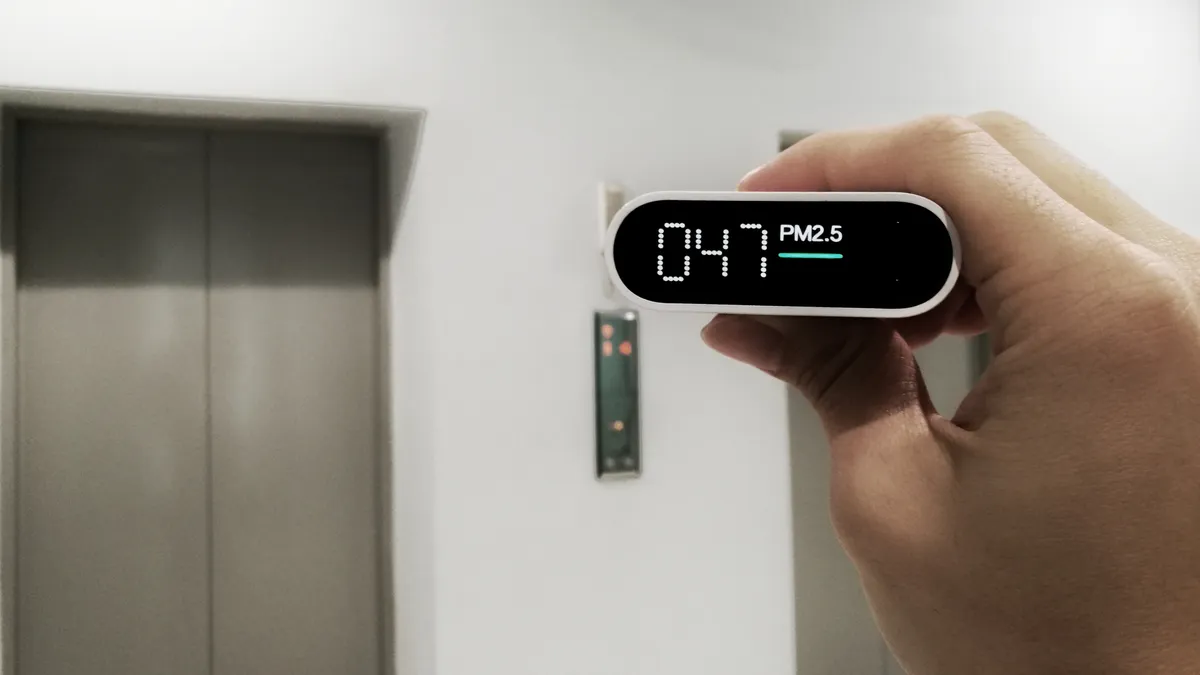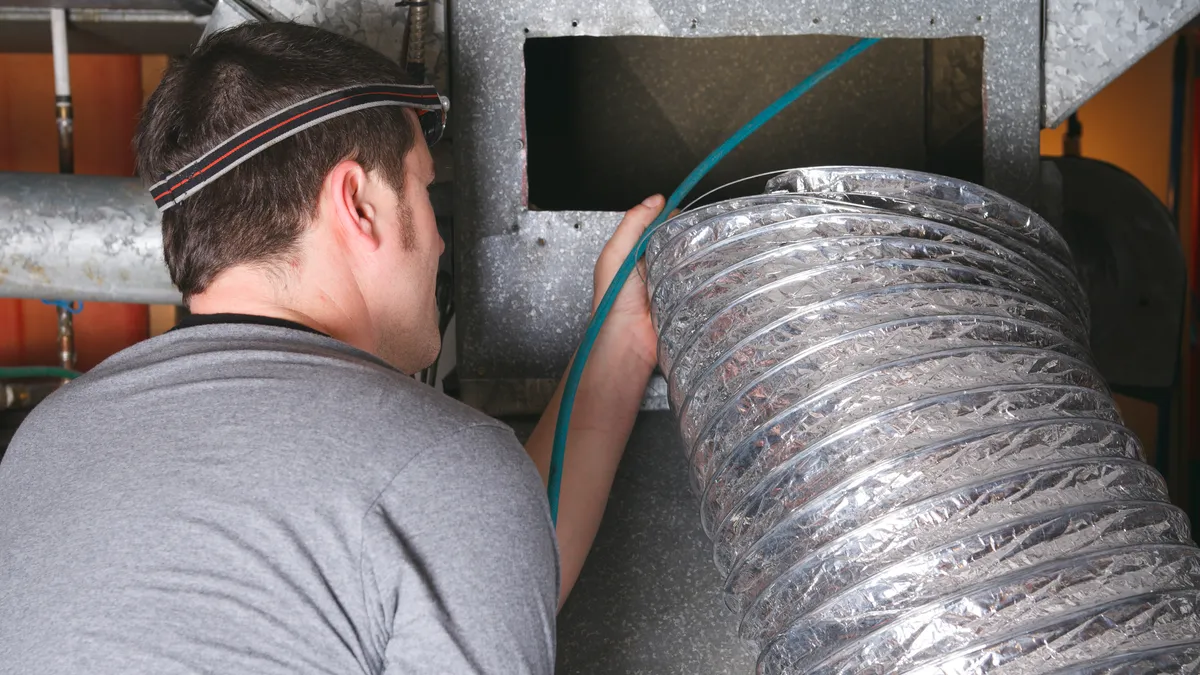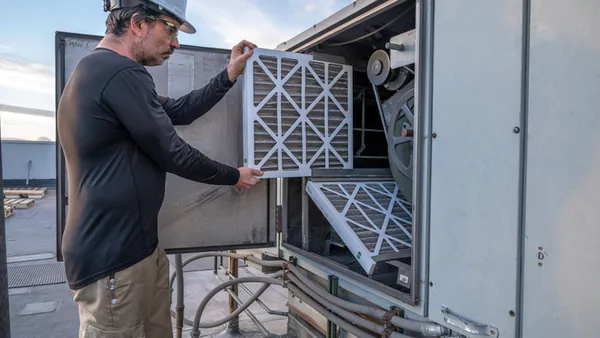Dive Brief:
- Only 33% of U.S.-based workers and 25% of Canada-based workers surveyed by Fellowes across the U.S. and Canada characterized the air quality in their workplace as “very clean.” That response was given by 29% of total respondents, compared with 36% who responded to last year’s survey.
- About 31% of the more than 1,000 respondents said they would consider leaving their job due to poor indoor air quality, while 91% of respondents stated that clean air should be a fundamental right for all workers.
- Fellowes noted that 89% of respondents believe clean indoor air improves their work performance. This finding aligns with a Harvard T.H. Chan School of Public Health study, which highlights the adverse effects of elevated particulate matter and carbon dioxide levels on employee productivity and efficiency.
Dive Insight:
As part of its annual workplace wellness survey, Fellowes polled 1,085 workers across the U.S. and Canada who work on-site indoors at least one full day a week. Employees who don’t find their workplace particularly clean tend to associate poor indoor air quality with stagnant air, insufficient circulation, noticeable odors and signs of mold, stains, dust and airborne particulates.
The U.S. Environmental Protection Agency states that the average U.S. worker spends 90% of their time indoors, where concentrations of certain pollutants are two to five times higher than typical outdoor concentrations. “Employers that invest in air purification with HEPA filters, upgraded HVAC systems and improved ventilation can protect workers from airborne viruses, including COVID-19 and its variants, bacteria, pollution, allergens and volatile organic compounds (VOCs),” Fellowes said in a Sept. 6 news release.
Clean indoor air is strongly correlated with increased work performance, the Fellowes survey found. That data point reiterates the findings of research led by the Harvard T.H. Chan School of Public Health. That study, which involved more than 300 office workers across six countries, including the U.S. and the U.K., found that workers’ response times were 0.8% to 0.9% slower for every 10 ug/m3 increase in airborne particulate matter with a diameter of 2.5 micrometers and 1.4% to 1.8% slower for every 500 ppm increase in carbon dioxide levels. Slower response times mean individuals take longer to complete tasks and make decisions, in this case when exposed to certain indoor air quality conditions such as higher levels of carbon dioxide or particulate matter.
Among those respondents in the Fellowes survey who did not consider their workplace air quality to be very clean, 35% pointed to inadequate circulation or stagnant air; 33% were worried about humidity levels; and 25% cited the presence of mold, stains, dust and airborne particulates as contributing factors. Perceptible odors were also reported as an issue by 25% of respondents.
Thirty-seven percent of workers surveyed said their employers had made indoor air quality improvements in the last year. Among organizations that did so, the addition of air purifiers was a key change observed by 59% of respondents.
Twenty-nine percent of respondents characterizing workplace air quality as very clean “seems like a shocking[ly low] number to me,” said Ketan Mehta, vice president of product management and marketing at TSI Inc., which designs air quality measurement instruments.
In contrast, a similar indoor air quality survey conducted by Fellowes in 2022 found that a larger proportion of survey respondents (36%) described their workplace air as “very clean,” while 60% thought their employers were taking the right steps to enhance indoor air quality.
Mehta expressed concern about the proportion of respondents who pointed to perceptible odors, molds, stains, dust and particulate matter. “If your filters are not doing their job, dirt can pass through,” he told Facilities Dive. “Or if you’re generating dirt inside the building, and you’re not managing particle capture at that source of generation, those particles might spread throughout your HVAC system in the building. That can be a real hazard.”
Mehta added that odors can pose problems when there is a lack of good ventilation or no proper mechanism to attack the volatile organic compounds that cause odors, especially in indoor environments that involve working with paints and solvents that can create fumes and smells. Addressing the issue of odors involves identifying the source of problems, like leakages, by gathering data and acting on it, he noted.
He said, “This is typical of the industrial hygiene framework, where they look at the data and go to the source of the problem and fix that source, rather than adopting a peanut-butter approach to problem-solving,” which spreads solutions too thinly and too far for them to be useful. Facilities managers should aim to follow the industrial hygiene approach to minimize inefficiencies and be more systematic and data-driven to indoor air quality issues, he added.














